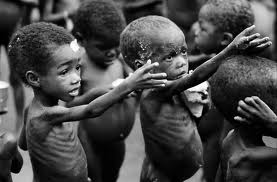Activity #6 – Understanding the classification system devised by Terry Barrett in his book “Criticizing Photographs”
Descriptive Photographs
Descriptive Photographs are no more than a description of a subject. For example this mug shot of Hugh Grant that we have all seen before. Its purpose is to put a face to a name in a database. Other examples of this classification would be an x-ray, an image from google earth etc.
__________________________________________________________________
Explanatory Photographs
Explanatory photographs are exactly that – images that explain or describe a situation. These can range from images as instructions or like here a patient who is clearly very ill and undergoing cancer treatment. To be accurately placed in this category the photograph should provide visual explanations.
___________________________________________________________________
Interpretive Photographs

Image by Cayden Lane Photography. http://www.facebook.com/caydenlanephotography
Interpretive Photographs are personal and subjective interpretations, more like poetry than a scientific report in their ability to tell a story.
I have chosen this image by Caden Lane Photography of the two children playing with a giant ball that looks like earth. What does this symbolise? Perhaps the two really do have the whole world at their feet.
_______________________________________________________________________
Ethically Evaluative Photographs
Ethically Evaluative Photographs describe and make ethical judgements. They show how things should or should not be and are politically engaging and passionate images.
This image of these starving children with their hand out for food show the effects of poverty in 3rd world countries. This image is very confronting, I don’t think anyone could look at an image like this and not feel some very deep emotions.
______________________________________________________________
Aesthetically Evaluative Photographs

Image C\- http://www.design-
seeds.com
Aesthetically Evaluative Photographs point out what their photographers consider worthy of aesthetic observation or contemplation. It is considered “art photography” and consists of, but not restricted to nudes, landscapes, and still life photographs. Basically pictures that are fascinating in their visual beauty.
I have chosen this landscape photograph of the lavender field at sun down or sunrise, Its very simple but also very beautiful or aesthetically pleasing.
_______________________________________________________________
Theoretical Photographs

Colourful Portuguese Umbrella Canopies.
Image by Patricia Almeida
http://www.flickr.com/photos/vento-na-praia/
Theoretical photographs comment on the issues about art and art making, the politics of art, and modes of representation. They are photos about films, photographs of photographs, art about art, and can be a visual type of art criticism that uses pictures rather than words.
I have chosen these images by Patricia Almeida.The colourful spectacle was created in the streets as part of an arts festival called Agitagueda in Portugal.


















